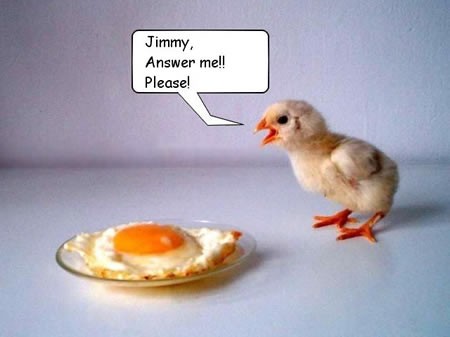Today:
.
We start our George Michael Sports Machine with a look at the recent SSI thread on DiPoto and K:BB rate. Diderot and GLS raised this interesting question:
.
but is it possible to also teach this to people already 'established' in the majors? Or in Zunino's case, previously present in the majors? (Did 'er wrote)
We know so little about player development, both in the minors and the majors. How long does it take for a young player's skills to "set"? If a player makes it to AA and AAA with a certain set of conditioned responses that have allowed him to succeed to that point (but will be exposed in the majors), is it still possible to mold that player so that he can succeed in the majors? (GLS)
.
Cool Papa's note in the same thread? --- > it grok'ked Bill's light bulb point. As a hitter gets better, his K:BB will reflect that he's getting better. Not, "push your K:BB up so that you get better."
Actually you can look at it either way. You have Skill circling around 12 o'clock down to K:BB control at 6 o'clock ... or you can view it as starting at 6:00, pushing up to 12:00, which pushes back at 6:00.
The Catholic Encyclopedia (not my cup of tea, but ruthlessly logic-oriented) will point out that we can view Gluttony and Lust as two of the sub-forms of basic Sloth, or we can view Sloth and Gluttony as sub-form of Lust ... well, that illustration wasn't very chipper, now was it. :- ) But the point is, when human idiosyncrasies are related to each other, it's often very feasible to view one as driving the other - or both working in a circle.
....
Going from the theoretical to the concrete, then? Mark Trumbo grok'ked this year that he needs to organize his swing, starting from low-away and adjusting from there. He then got better at hitting. That is clearly an example of James' point. The K:BB went from 0.10 to 0.33 because his improvement "went through" the strike zone.
Ketel Marte got to the majors and -- at least in the short term -- listened to Cano and Cruz about "letting the game come to you." For some reason, when they said so, Marte grok'ked it. His approach to hitting changed; he got better. Was he merely thinking about taking more pitches? Of course not. Here's another clear example of James' point; it's not as simple as just throwing more strikes or trying to walk more. It's about getting better.
Eric Wedge tried to communicate directly with Seattle bloggers. He said, sometimes being more aggressive is the key. Just taking a bunch of pitches is not usually the way to hit better, especially for Dustin Ackley. Wedge suffered a lot of derision for stating this truth. Baseball is a lot more complicated than can be conveyed in a simple algebra equation.
....
When does a hitter's "set point" occur? He is subject to two "forces," one positive and one negative:
(1) The hitter is learning all the time. From a wisdom standpoint, his trajectory is ALWAYS going UP.
(2) Around age 27, the batter's reflexes start deteriorating.
At this point it becomes a fight betwixt the two; about ages 27-31 the batter's learning is going up faster than his reflexes are declining. MOST hitters see their K:BB ratio get better from ages 21 through 26, and often they get WAY better VERY FAST. Check out Carlos Beltran. At age 24, his EYE ratio was 52:120, but just a couple of years later he got to nearly even. He stayed there through his time with the Mets, age 34. Then you could see -- through his K:BB -- he became a worse hitter, because of reflexes.
If somehow a player could keep exactly the same reflexes through age 60, then by age 60 he'd be better than Barry Bonds. :- )
So the "set point"his where his upward BRAIN curve reaches equilibrium with his downward BODY curve. For some strange reason, Nelson Cruz' body curve didn't go down like other guys' did.
.
MIKE ZUNINO
Mike Zunino may have a slider-speed bat. This last year he punished anything below 90 MPH, but was garbage on fastballs and cutters. Time and again he kept his hands back on 85 MPH benders and hammered them into the bullpen. He was +1.60 runs per 100 pitches on curve balls, and close to even on sliders. However, he was -1.94 on all simple fastballs (??) and -3.21 (!!) on cut fastballs breaking in to him.
But. When Zunino first came up, he was good on fastballs and cutters, being murdered on curves and changes. +0.02 on fastballs, -3.75 on curves. This wild bouncing around on his pitch-types sounds like confusion to me, not physical limitation. He's groping around figuring out what part of the zone to defend, back or front.
......
Or, he may just need more pitches. Zuumball just had his age-24 season; at that age, there was a college catcher named Jason Varitek in AA. During Varitek's age-25 season, we dumped him on Boston, where he hit .197 in AAA.
At age 26 he became a lousy hitter in the majors, 83 OPS+. At age 28, Varitek was still posting the 83 OPS+. But! at age 29, he'd seen enough, and whaled on enemy pitching to the tune of .293/.371/.489. 'Tek posted an OPS of 850+ in four of the next five seasons, averaging .280/.370/.500.
Could I convince you that at age 24, a swing tweak would have solved 'Tek?
No. And neither should I be able to convince you that Zunino needs to wait till age 26 (to hit 80-100 OPS+), or that he's going to jell at any given moment in time.
BABVA,
Dr D

OK, minor leaguers and the strike zone paradigm--I'm in...